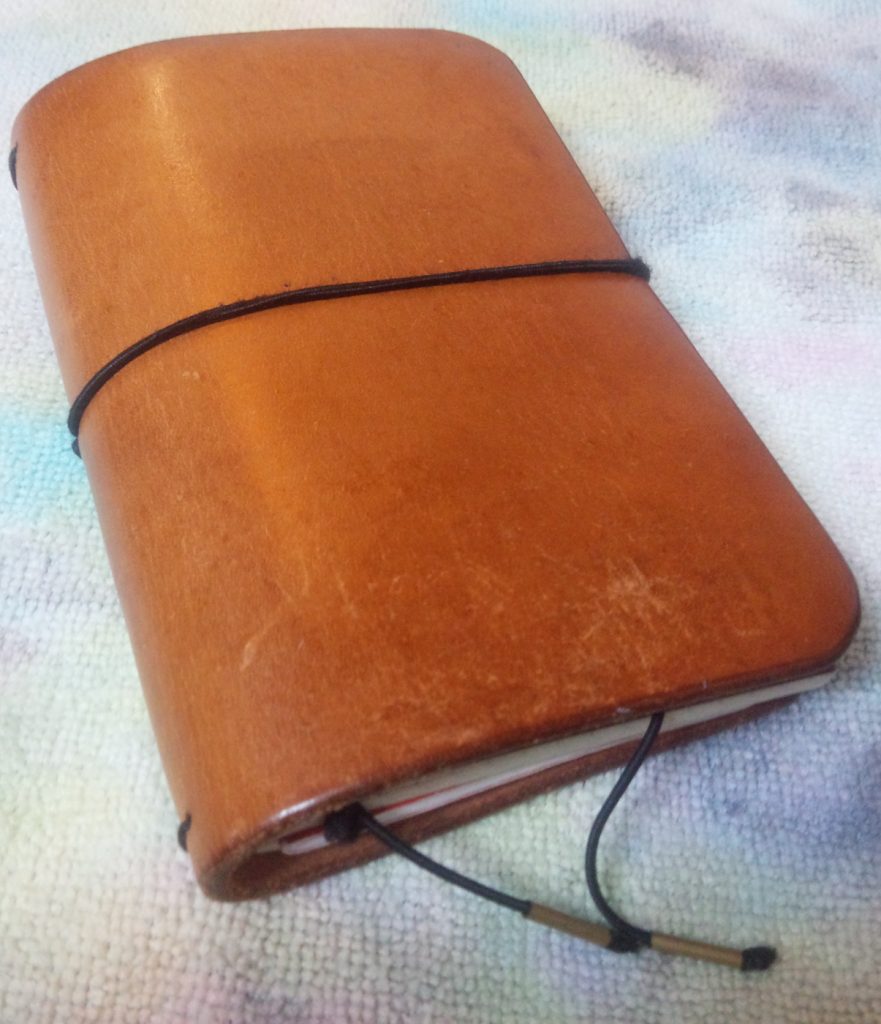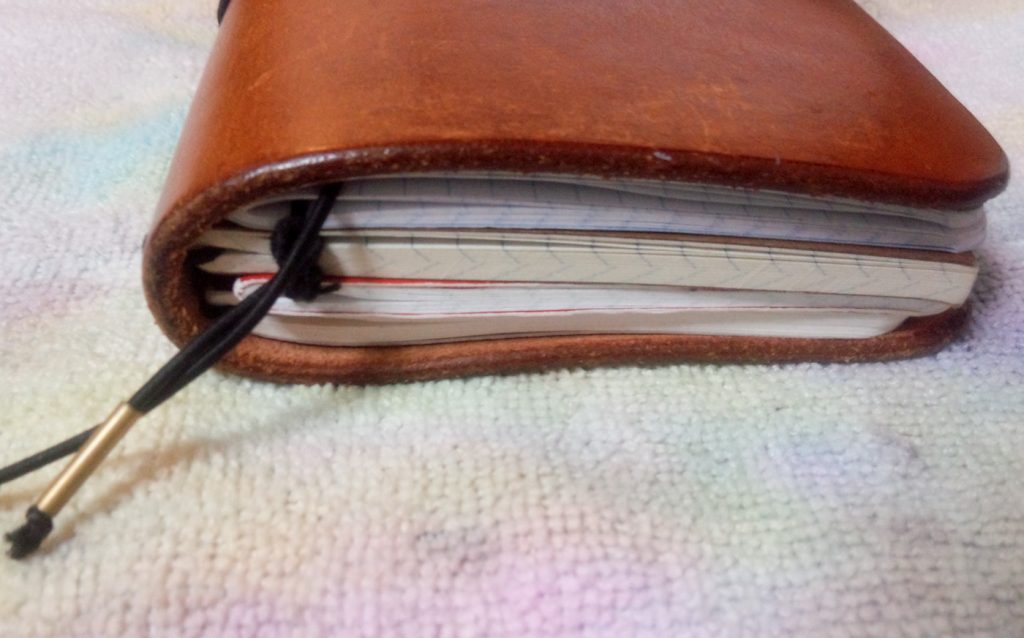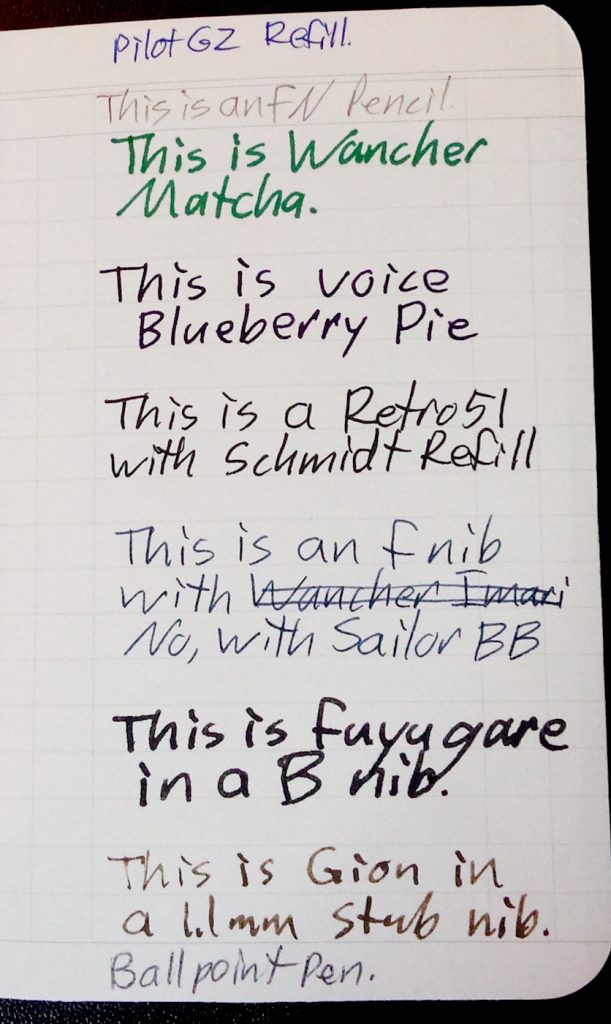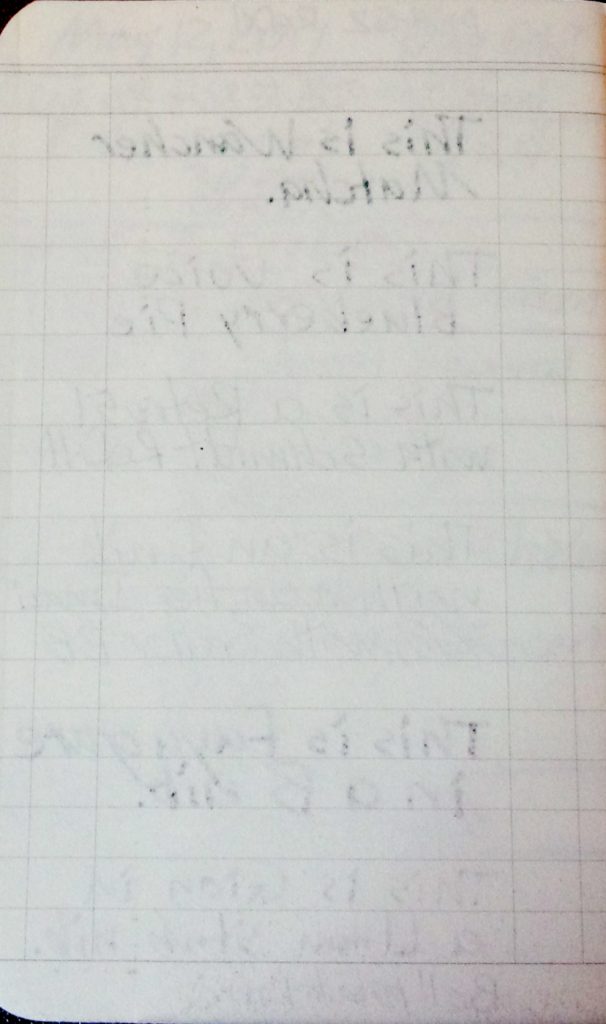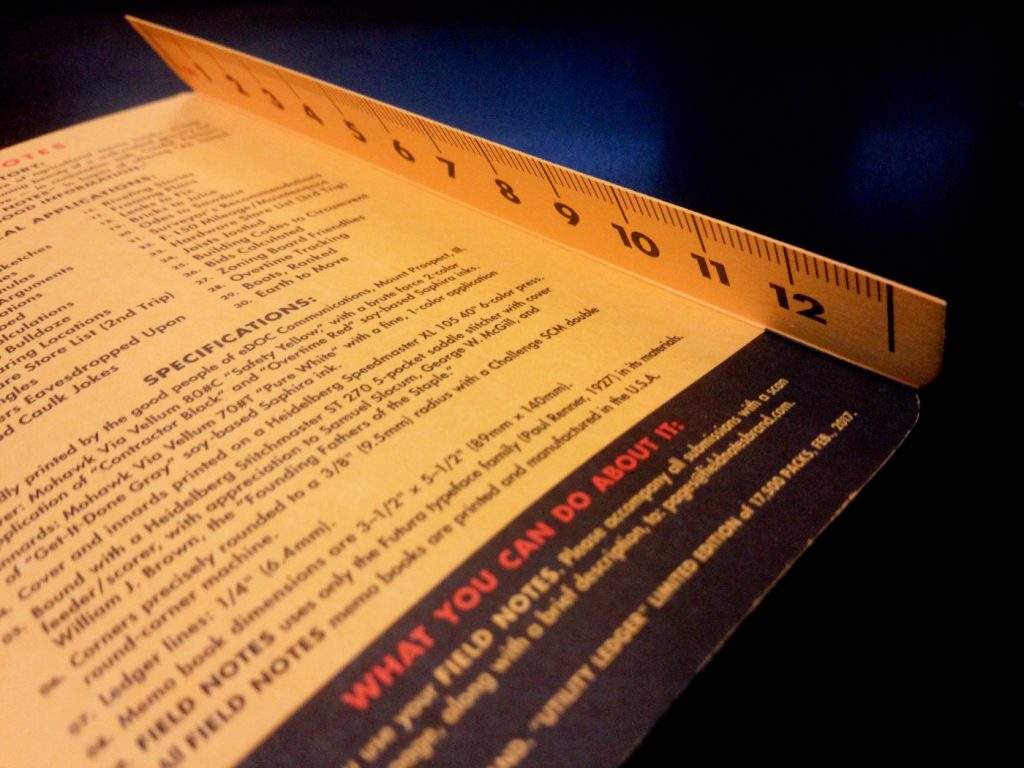The short version is: what I normally hate I actually like and what I don’t need I no longer have. Also, I’m mad I didn’t get to ruin one of them myself.
The Field Notes “Resolution” edition is offered as a productivity kit that offers two books of pre-made to do lists (called Checklist Journals) and week-per-page free diary for people interested in a pocket diary that fits Field Notes covers.
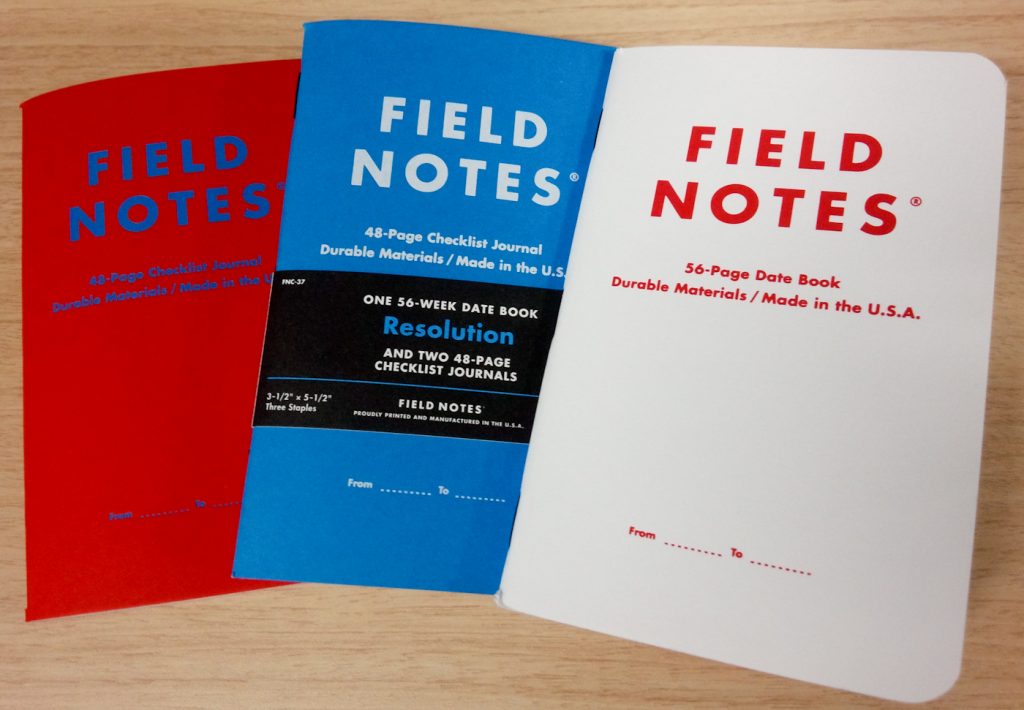
The three parts of a “Resolution” pack.
The colors are great, with my favorites being the white and blue covered versions. The red version, with blue lettering, is a bit vibrant for my taste and I wish it had white lettering.
My first serious complaint came when I discovered that my belly band had been glued to the blue Checklist Journal and I had to slightly damage the cover to take it off. (Note: this only happened in one pack.)
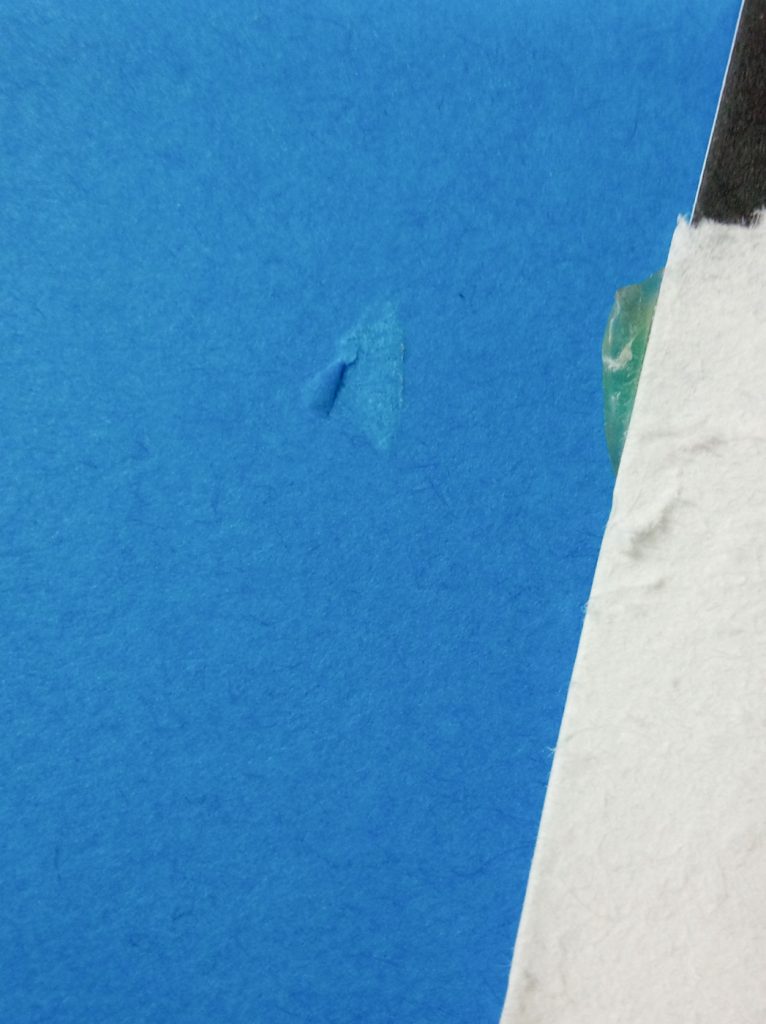
The damage and the glue.
Granted, this isn’t that big of a problem except that I like to ruin my own books in my own way. I compare this to having someone dog-ear the page of one of my books. Yeah, the book hasn’t changed and it can still be read, but that doesn’t mean the person who damaged it doesn’t deserve a slow and painful death.
What I really like, though, is something I usually hate. As a rule, I’m not a big fan of gridded pages. The grids break up the ink, even when it’s just a dot grid. I prefer lined or blank pages in my journals.
The Checklist Journals have an interesting spin on this problem that actually makes it work for me. The paper is grey with printed white space. Some have complained that the white printing makes the same ink look different than it does on the grey paper.
However, this also makes the various entries easier to identify. Granted, I force myself to use one line, which can lead to code breaking sessions where I try to crack my own notes, but it makes it the do lists easier to read.
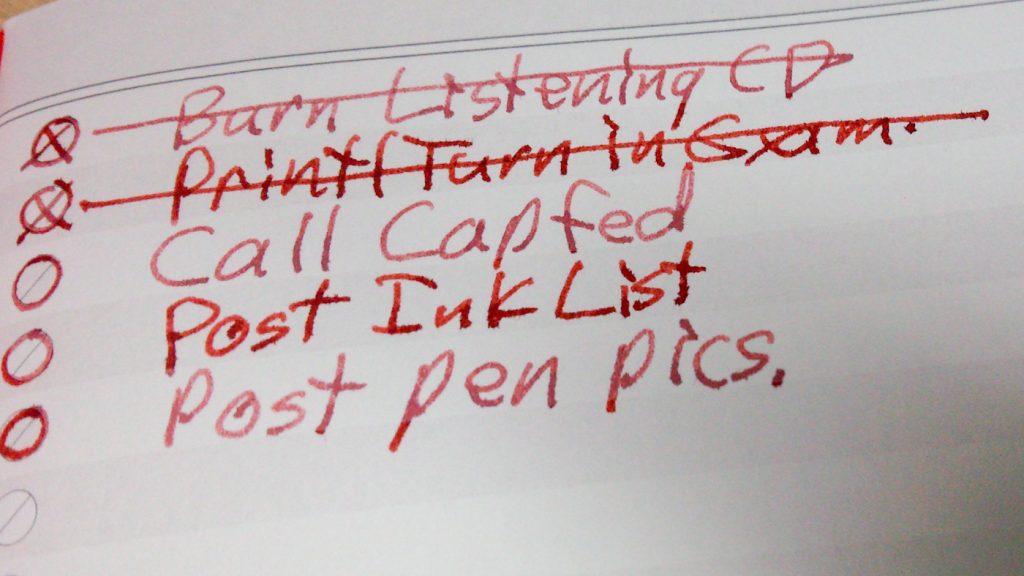
The same ink on different lines. Looks different, but each entry is easy to identify.
Because of this, and because I like the size, the Checklist Journals will stay in my office and will serve as my work to-do lists. I’ll have a more thorough review of them some day.
As for the Date Books: although I like their red on white covers, I don’t need them and have already given them away to people I’m slowly infecting with the Field Notes virus.

